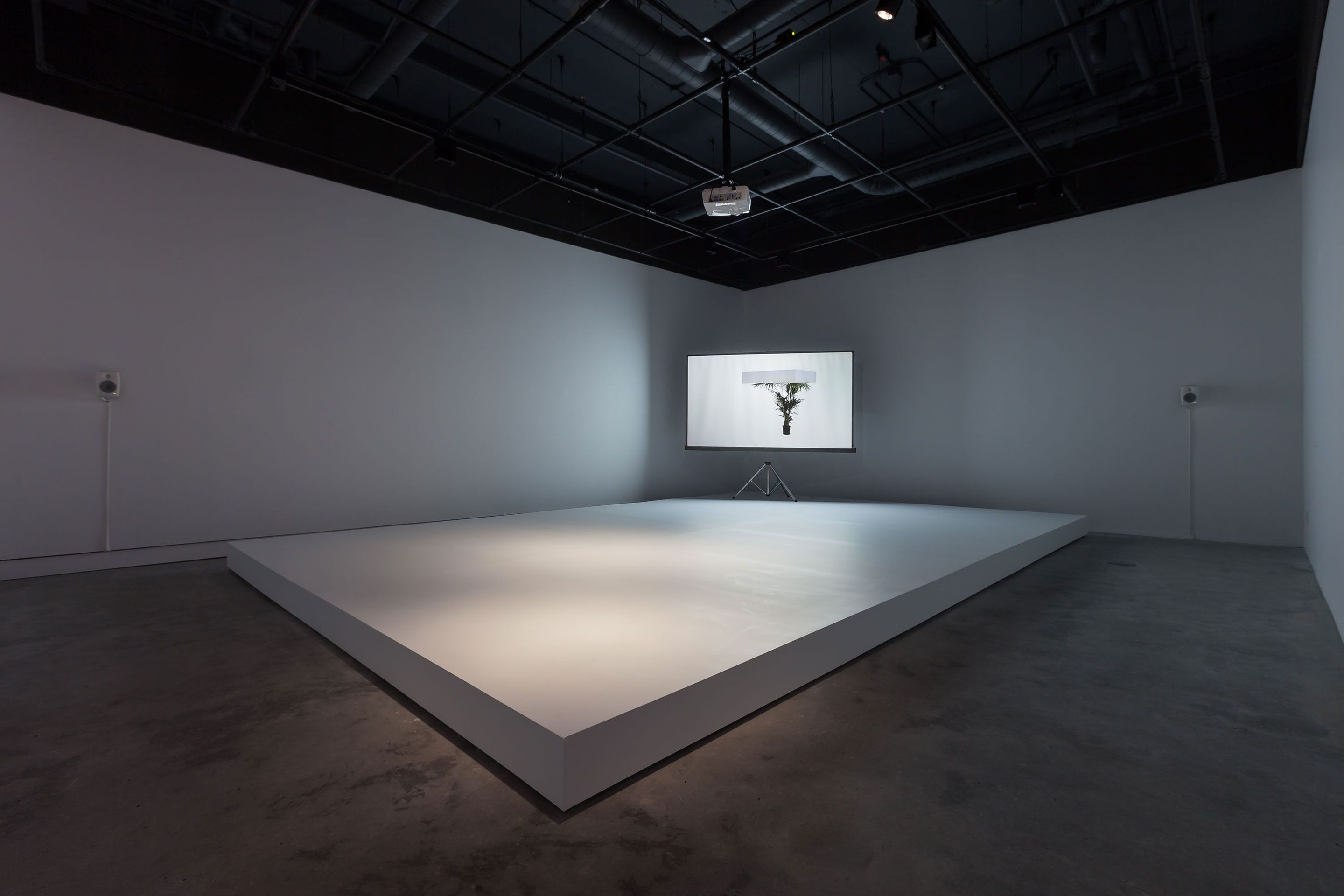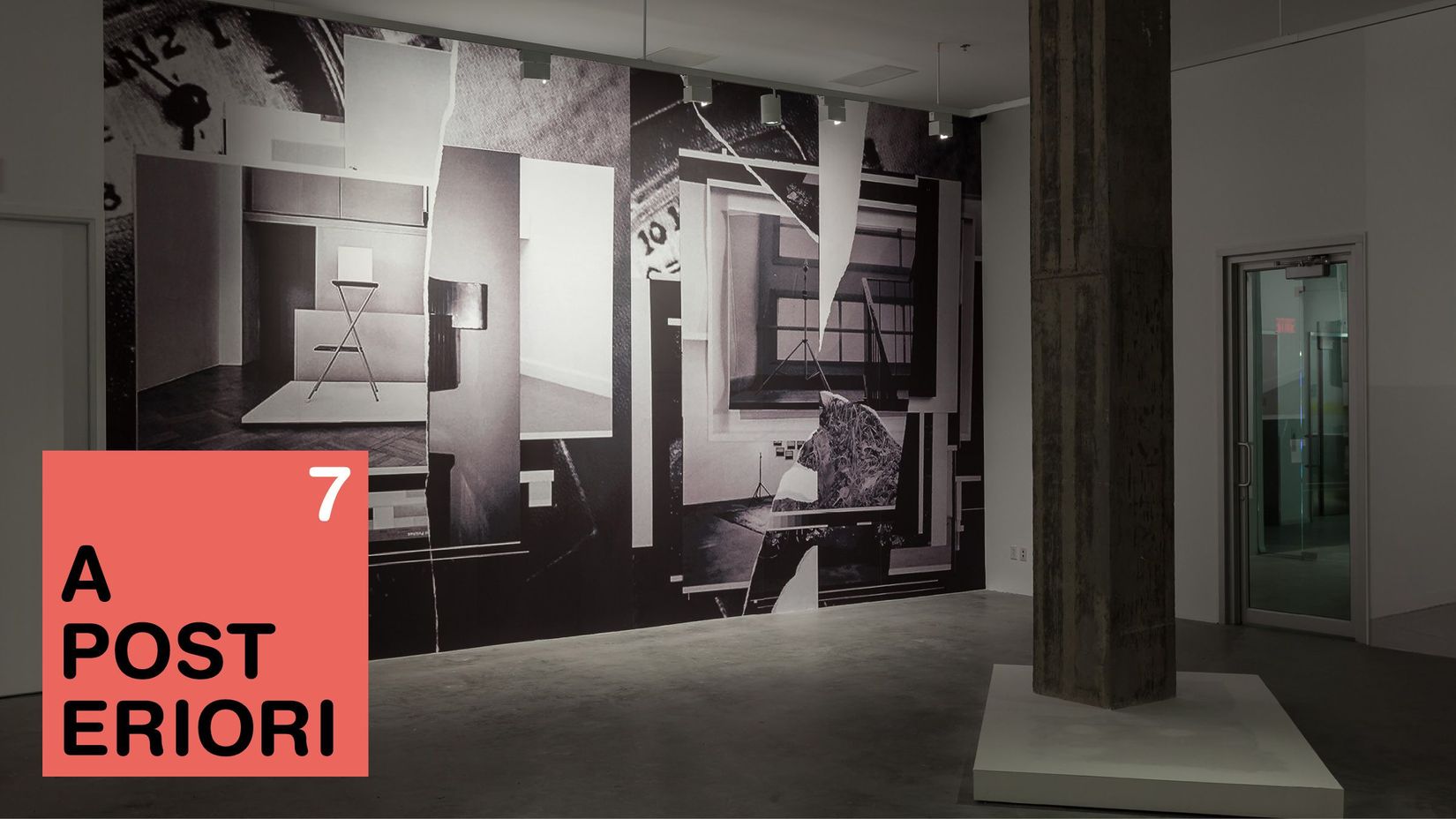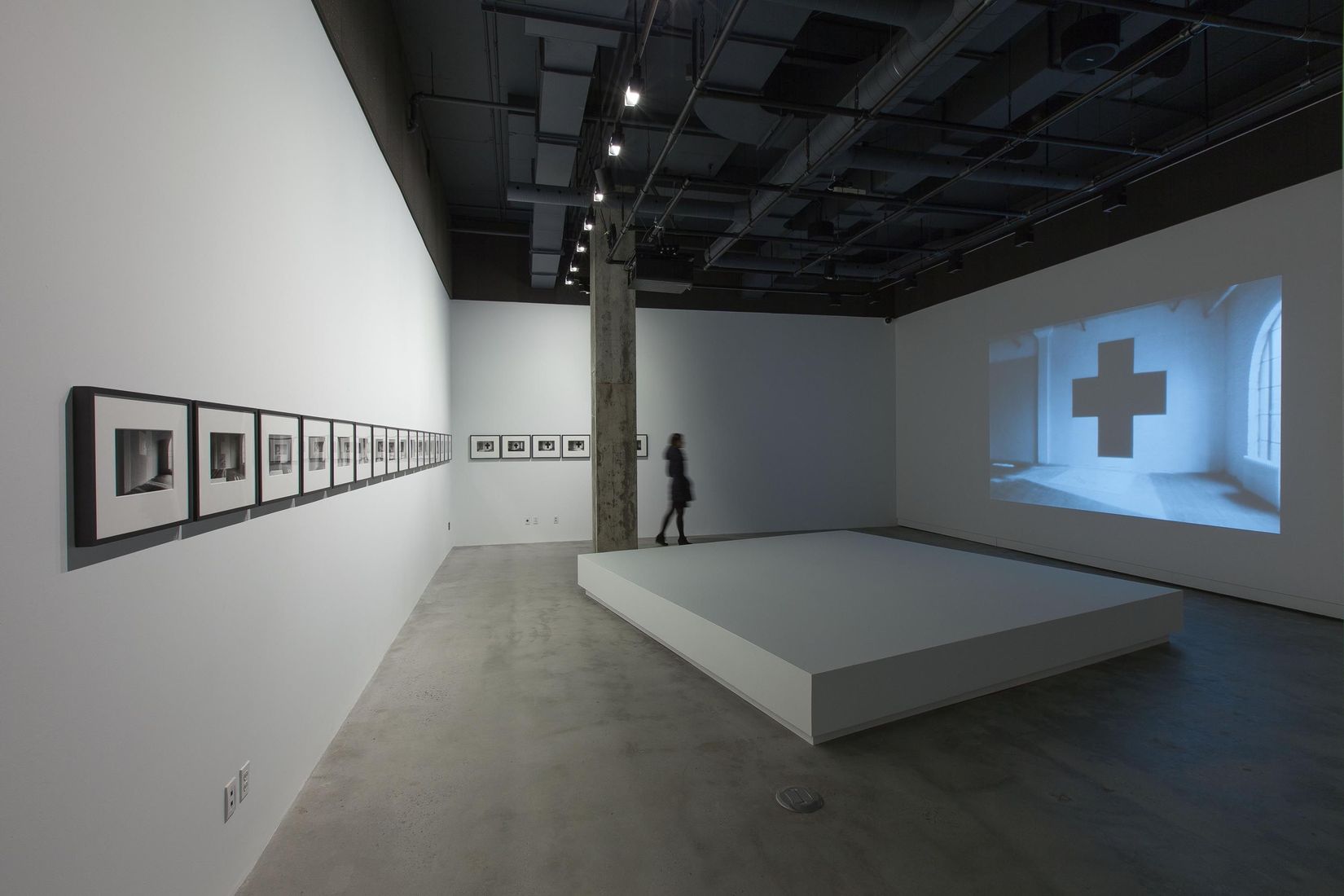
David Maljković
2016.01.14 - 04.16
In many artists’ work, the exhibition has become both object and subject. The work of David Maljković is no exception. In his practice, though, the exhibition refers not only to a material or contextual space, but also to a process, during which the work of art undergoes successive adaptations. This exhibition at VOX extends a line of thinking initiated by the gallery about the role artists play in transforming the forms, conventions and practice of the exhibition.## David Maljković. The Exhibition Is Becoming
MARIE J. JEAN
The exhibition as an art practice is hardly a novel phenomenon when one considers that, beginning in the 19th century and throughout the 20th, artists developed experimental apparatuses that contributed to radicalizing its forms and conventions. The recent work of David Maljković adheres to that practice while at the same time expanding the field of questioning: he stages meticulous environments that manifest themselves, among other things, as commentaries on the fact of exhibiting. As such, his art is about meta-exhibition, because its undergirding issue is exhibition. In short, they are exhibitions about exhibition.

For his first major show in Canada, Maljković has developed a specific exhibition that unfolds as a complex array of forms and references. Its components—white cubes, pedestals, screens, platforms, loudspeakers, projectors—are typically viewed by spectators, or used by exhibition curators, as generally neutral display devices, but Maljković demonstrates that they are in fact an autonomous reality, rooted in the history of Modernism and likely to spark memories of other exhibitions. Consequently, when he mounts an exhibition of his work, he shows the traces of his previous shows; when conceptualizing a new installation, he considers it as a component of a global exhibition; when showing a work on a new occasion, he posits it as a sequence of hypotheses of the same work in the process of becoming. Viewed thusly as a process, the exhibition is the method by which the work is (re)produced again and again—so it remains unfinishable. Because it is clear that making a work of art today signifies that the artist must engage in an undertaking without end, considering that, in being submitted to successive actualizations, it is bound to repeat itself and incorporate new variables each time.
This question was investigated by Étienne Souriau, who in 1968—at the same time as Barthes and Foucault formulated their article-manifestos revisiting authorial function—mapped out a striking conceptual architecture that defined the artist as a “researcher” engaged in a “work to be made,” existentially unfinishable.1 Souriau, a professor of aesthetics, rejected the idea that making a work of art involves inspiration or pure spontaneity, viewing it much more as a continuous activity, wholly determined by a process of “research.” He explored the question of “unfinishedness,” dwelling in particular on the “path” leading from the sketch/outline to the work—and which, in that sense, is the exact opposite of a project (or plan) entirely determined by the result. In the case of a project, Bruno Latour and Isabelle Stengers explain, a “finished work may be merely the final coinciding of a plan with a reality that at last conforms.”2 In fact, it is not so much that process which Souriau designates, but something far more vertiginous, which every designer or maker avoids addressing: the failure of the process, which implicates the work as much as the artist. Latour and Stengers continue: “Souriau transformed the apparently simple path from the idea to its execution into a true obstacle course, for the excellent reason that at each moment the work is in danger as well as the artist.”3 The artist is therefore subject, with no freedom whatsoever, to the “errability” of the path.
To delineate that trajectory—and not confound it with the notions of creating, planning and constructing—Souriau refers to “experimental apparatuses,” the “active” role of “observation,” and the “production of facts that have the power to show whether the form realized by an apparatus is or is not able to apprehend them.”4 This notion, Souriau explains, both conveys the freedom and effectiveness necessary for any artmaking, and allows for a share of danger that can potentially compromise its completion. Because during that process a multitude of acts of innovation occur, punctuated by many decisions, trials and errors, wholly determined by the unpredictability of the context. Artists have often described that testing as “experimental research,” as Marcel Broodthaers has explained: “L’Aigle de l’oligocène à nos jours was announced as an experimental exhibition, which is the same thing as saying: your outcome wasn’t assured at the beginning. I could not say for certain if, between my intention and the outcome, certain differences wouldn’t crystallize; I could not express, in advance, a critical opinion on that point.”5 We call “experimental”, Broodthaers suggests, that which materializes the undetermined nature of a process of artistic research. Souriau takes this further, comparing the work to a “character” (personnage) having a concrete existence subjected to the long, undetermined and uncertain process of its advancement.6 At that point the work acquires a “right of existence” even though its autonomy remains entirely relative. Innovation is important, Latour and Stengers remind us, because that statement means “there is not, initially, a thought that would then turn toward an object to extract its form from it.”7 Thus artists do not have necessarily preconceived notions—indeed, they may find something other than what they were looking for—because they proceed, in the course of developing their work, by unexpected discoveries. By that definition of artmaking, it is neither the artist who precedes the work, nor the work that imposes itself on the artist: rather, the two form a productive unit.
Souriau “methodically defends” the idea of the “existential pluralism” of artmaking, but in doing so more attentively observes the path leading from the sketch/outline to the work. Unlike Maljković, however, he was little interested in the mode of circulation and in what works become once they leave the studio. We have an excellent opportunity to revisit the arguments that Souriau developed about the existential unfinishedness of works by having them take a new trajectory: from work to exhibition. A work is the outcome of a complex process, of a great many decisions that contribute to giving it a specific form. Customarily, we consider the exhibition of that work to be, in a sense, its ultimate decision, by which the artist’s action is completed. But this is not the case: each new exhibition assigns to the work of art a new mode of existence. The exhibition could in a way be considered a new sequence taking place within a broader “suspense” under development. David Maljković is an essential case study with respect to this question, because he has understood that the making of a work does not stop with its initial presentation: each new showing continues to make it. Accordingly, this exhibition helps us understand that any exhibition is all at once a material and discursive device and a mode of existence for its practice, for its work, at a given moment along a trajectory.
This first major exhibition of the artist David Maljković in Canada is presented with the support from the Hrvatska kuća–Croatia House Foundation and in collaboration with Metro Pictures (New York). VOX also thanks its partners M.F.B.B. and Robert Film Services for their commitment and the quality of their production services.

